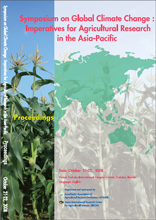Soils and Fertilizer Management for Carbon Sequestration

In comparison with the geologic and oceanic options, C sequestration in soils and terrestrial
ecosystems has numerous ancillary benefits (Lal, 2008a). For example, increase in soil C pool
improves soil quality and agronomic/biomass productivity; enhances water quality by reducing
erosion and non-point source pollution; increases soil biodiversity; improves use efficiency of
agronomic input and enhances the environment quality (Lal,2004a). Soil C sequestration (SCS) is
based on the natural process of photosynthesis and conversion of biomass C into soil C pool.
Therefore, the rate of SCS depends on the rate of soil application of biomass C along with those of N,
P, K, S and other components essential to humification (Lal, 2008b). While C is supplied through
application of biosolids, it is also essential to maintain a positive nutrient budget through judicious
application of fertilizers and integrated nutrient management.Therefore, net rate of SCS must account
for the hidden C costs of tillage, irrigation, fertilizers, pesticides and other energy-based input. Most
of these inputs are manufactured through energy produced from fossil fuel. Hidden C costs range
from ~1kg C/kg of N to 5 to 7 kg C/kg of active ingredients of pesticides. Primary tillage operations
also require 30 to 40 kg C/ha (Lal, 2004b). Transfer of atmospheric CO2 into other pools with a larger
residence time(C sequestration)has several technological options. Geologic sequestration involves
capture, purification, compression transport and injection of industrially-produced (point source) CO2
into geologic strata about 1000 m deep into stable geologic strata or a saline aquifer. Compressed
CO2 can also be injected into old oil wells to enhance oil recovery (EOR), into unmineable coal seams
to increase yield of coal bed methane (CBM), or deep in the ocean floor where it forms a CO2 lake.
Stagnating and declining crop yields, especially in South Asia’s rice-wheat system, are attributed to
decline in soil quality caused by removal or burning of crop residues, low rate or unbalanced
application of fertilizers, indiscriminate/excessive grazing of stubbles, and inappropriate use of
irrigation water (Lal, 2008c). Most cropland soils of South Asia, similar to those of Sub-Saharan
Africa (IFDC, 2006), have a negative nutrient budget (Roy, 2003). The problems of soil degradation,
water pollution and contamination by fertilizers and pesticides, low and declining crop yields, and
poor environment quality can be partly addressed by restoring degraded ecosystems through
increasing soil C pool (Lal, 2008d). However, land managers must be compensated for the ecosystems
services of value to humans (Lal, 2008e). Sequestration of C in soils and ecosystems depends on use
of precious input(e.g.,crop residues,fertilizers,animal manure and compost,irrigation) for which
farmers must be compensated. Undervaluing soil C, as is the case by trading C at $2.50/ton of CO2
through voluntary market, is counter productive. The value of soil C for ecosystem services is as
much as $250/ton of C. Thus, farmers must be compensated appropriately and justly as an incentive to
adopt restorative land use and recommended management practices. Trading credits of C sequestered
in soils, by creating another income stream for farmers, provides the necessary incentive to invest in
soil restoration and adoption of recommended management practices.
| Date of issued | |
|---|---|
| Creator | Rattan Lal |
| Subject |
Carbon trading Hidden carbon costs Nutrient mining Soil exhaustion Carbon Ecosystem carbon budget Soil carbon sequestration |
| Publisher | Japan International Research Center for Agricultural Sciences |
| Available Online | |
| Issue | 2008 |
| spage | 203 |
| epage | 207 |
| Rights | Japan International Research Center for Agricultural Sciences |
| Language | eng |
